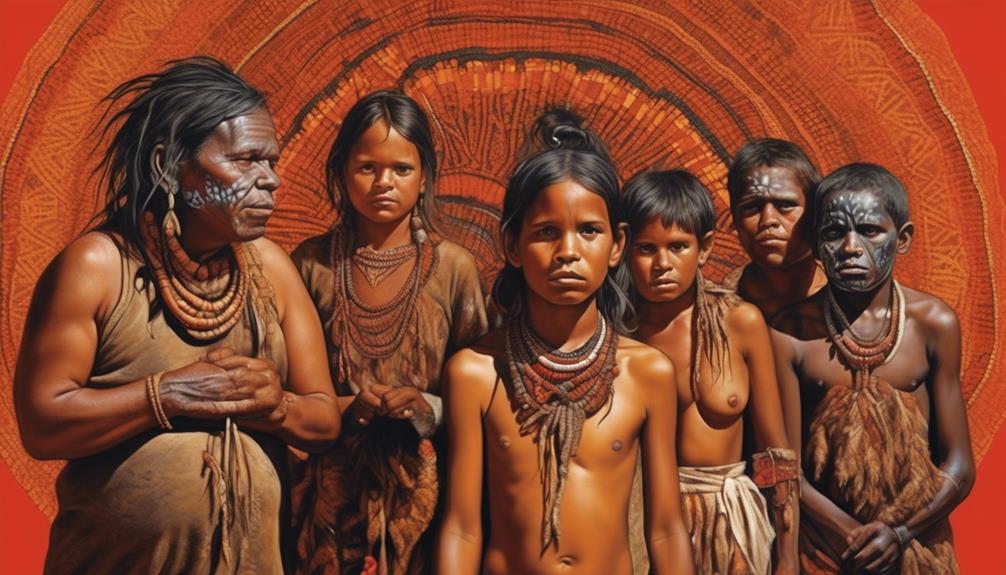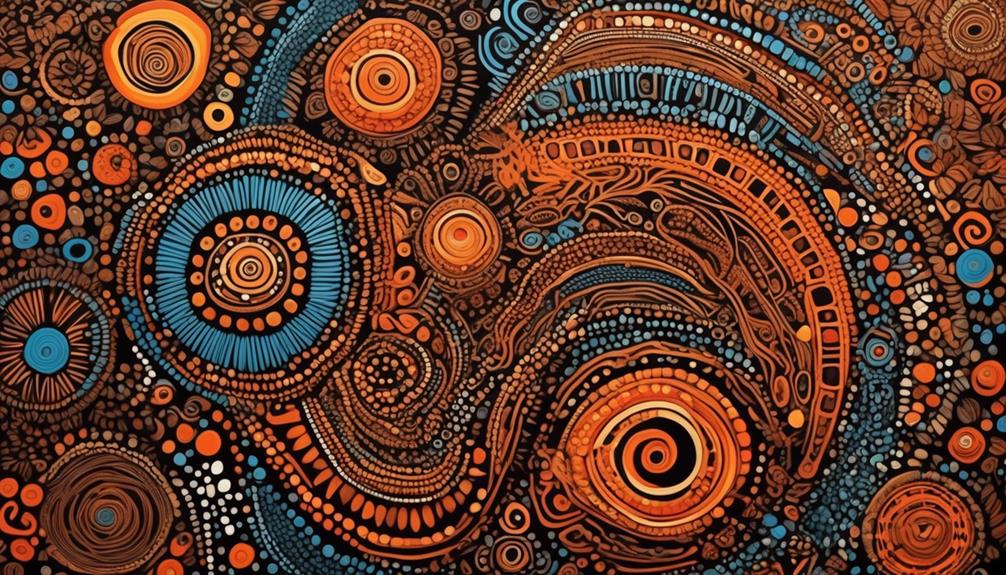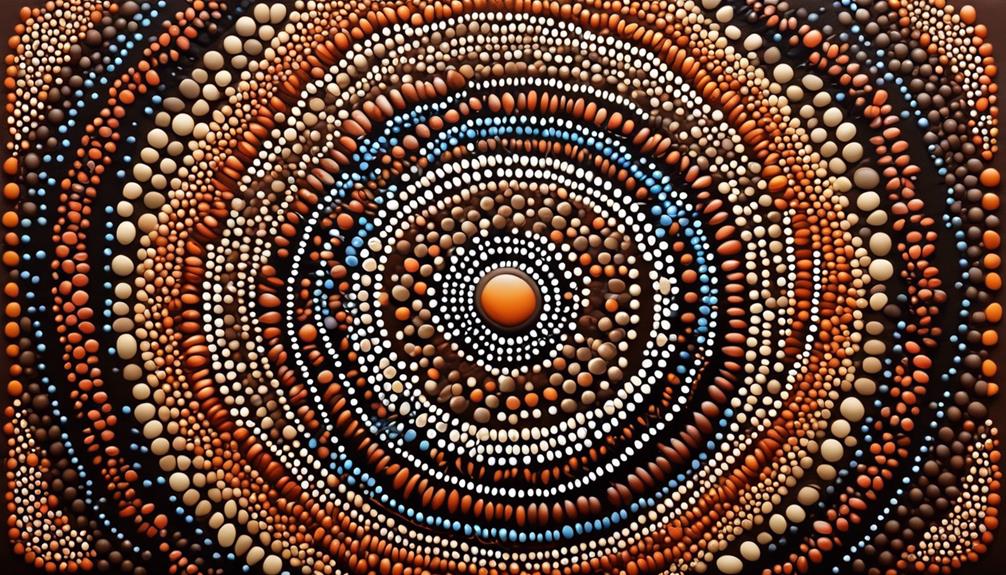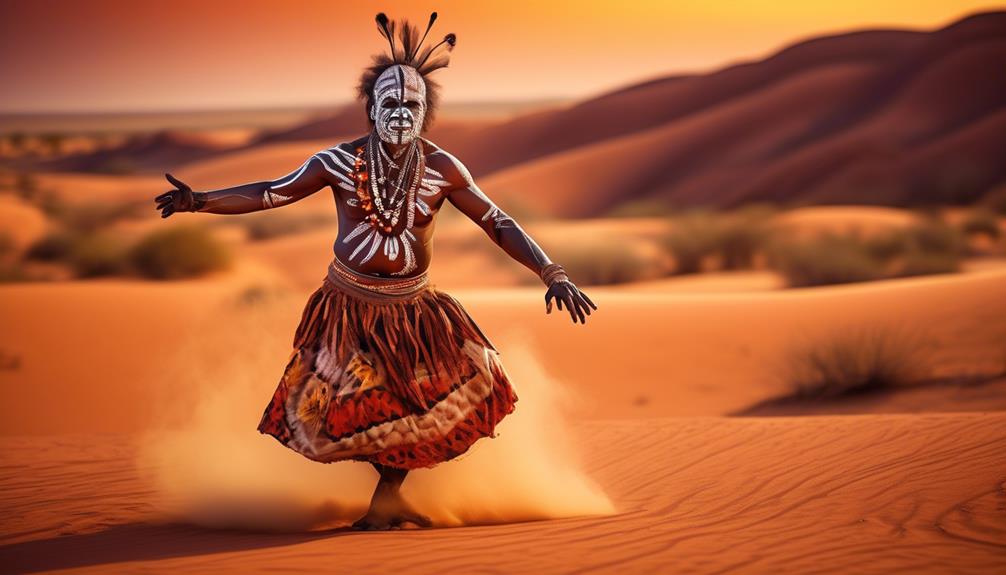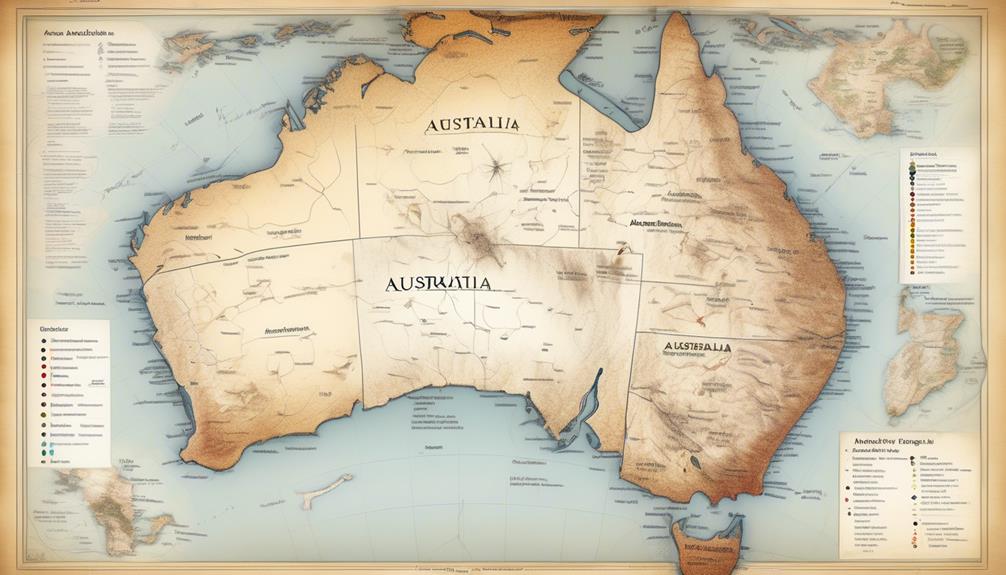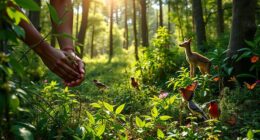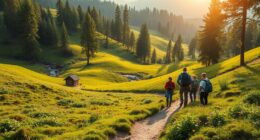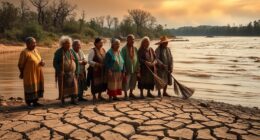It’s commonly stated that Australia enjoys the status of being a developed nation, boasting a superior quality of life. However, are you aware that the life expectancy for Aboriginal Australians is roughly 8-10 years shorter than that of non-Indigenous Australians?
This statistic sheds light on the complex and often troubling reality of how Aboriginal people are treated in Australia today. The disparities in health, education, employment, and overall well-being are indicative of broader systemic issues that continue to impact Aboriginal communities.
Despite ongoing efforts to address these challenges, the question remains: are Aboriginal Australians truly receiving the respect and support they deserve in their own country?
Key Takeaways
- Dispossession and displacement have resulted in historical injustices and ongoing legal battles for land rights and protection of sacred sites.
- Health disparities exist, with Aboriginal communities facing barriers to accessing quality healthcare and experiencing higher rates of chronic diseases and infant mortality.
- Cultural insensitivity within the education system has an impact on the engagement and well-being of Aboriginal students, highlighting the need for culturally inclusive curriculum and teaching practices.
- Employment issues, workplace discrimination, and overrepresentation in the justice system persist, calling for cultural awareness training, targeted education and employment programs, and comprehensive changes to create fair and equitable opportunities.
Historical Context
In examining the treatment of Aboriginals in Australia today, it's crucial to understand the historical context that has shaped their experiences and relationships with the Australian government and society. The impact of colonization on their cultural heritage has been profound. The arrival of Europeans in the late 18th century led to significant disruptions in the traditional lifestyles of Aboriginal peoples. The imposition of Western laws, the introduction of diseases, and the loss of land resulted in a severe diminishment of their cultural practices and social structures.
The impact of colonization also manifested in policies that aimed to assimilate Aboriginal people into the dominant European-Australian society. This approach, which included the forced removal of Aboriginal children from their families in what became known as the Stolen Generations, caused deep and lasting trauma within Aboriginal communities. These historical injustices have left a legacy that continues to affect the socio-economic and health outcomes of Aboriginal people today.
Furthermore, the historical context is characterized by discriminatory policies and practices, such as the denial of land rights and unequal access to resources. These systemic issues have perpetuated intergenerational trauma and contributed to ongoing disparities in areas such as education, employment, and healthcare.
Understanding this historical context is essential in addressing the contemporary challenges faced by Aboriginal communities and in working towards reconciliation and empowerment.
Land Rights
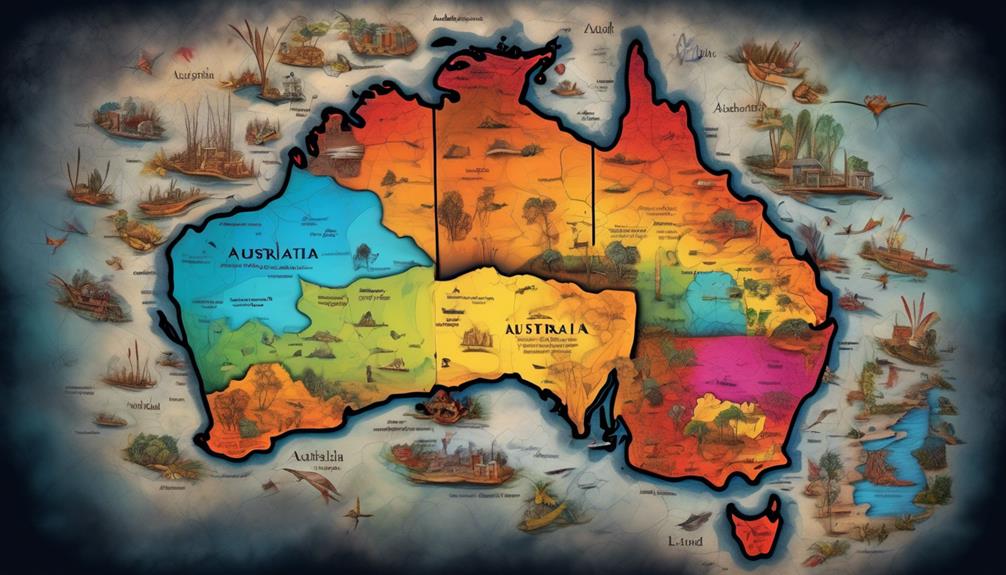
We'll examine the complex issue of land ownership for Aboriginal communities in Australia, considering the historical injustices and current legal battles surrounding this topic.
It's important to understand the ongoing struggle for recognition of traditional land rights and the impact of past policies that have led to dispossession and displacement.
Land Ownership Issues
Amid ongoing discussions and debates, the issue of land ownership rights for Aboriginals in Australia continues to be a complex and contentious matter. The current landscape of land rights and ownership issues among Aboriginal communities in Australia is shaped by economic disparities and historical injustices.
Here are some crucial points to consider:
- Native Title Legislation: The Native Title Act of 1993 recognizes the rights of Indigenous Australians to their traditional lands and waters, yet the process of establishing native title remains arduous and protracted.
- Economic Development: Aboriginal land ownership has provided opportunities for economic development through initiatives such as tourism, mining, and cultural enterprises, contributing to the empowerment of Aboriginal communities.
- Challenges and Conflicts: Despite advancements, disputes over land use, resource extraction, and environmental conservation persist, often leading to tensions between Aboriginal groups, government bodies, and commercial interests.
These factors underscore the intricate intersection of land rights and economic disparities within the Aboriginal community.
Historical Injustices
The legacy of historical injustices surrounding land rights for Aboriginal communities in Australia continues to profoundly shape contemporary discussions and policies.
Inter generational trauma resulting from the dispossession of land has deeply impacted Aboriginal communities.
The process of healing requires acknowledging the truth of these past wrongs and their ongoing effects.
Truth telling is an essential step towards reconciliation, fostering understanding and empathy between Aboriginal and non-Aboriginal Australians.
It's crucial to recognize the enduring consequences of past policies and to work towards redressing the injustices inflicted upon Aboriginal peoples.
Addressing historical land rights issues requires a balanced and sensitive approach, one that acknowledges the complexity of the situation and the need for healing and justice.
Only through honest dialogue and genuine efforts towards reconciliation can Australia begin to heal the wounds of the past and move towards a more just future.
Current Legal Battles
The fight for land rights continues to be a significant issue for Aboriginal communities, with several ongoing legal battles reflecting the persistence of legal discrimination and systemic racism.
The contemporary activism and political advocacy for land rights have brought several cases to the forefront, including:
- Native Title Claims: Aboriginal groups are pursuing native title claims to secure recognition of their traditional ownership of land and waters, often facing protracted legal processes and complex evidentiary requirements.
- Protection of Sacred Sites: Legal challenges are being mounted to protect sacred sites from development and destruction, highlighting the ongoing struggle to safeguard cultural heritage.
- Resource and Development Agreements: Aboriginal communities are engaging in legal battles to negotiate fair resource and development agreements, seeking to address historical injustices and ensure equitable economic benefits from land use.
Health Disparities

Significant disparities exist in the health outcomes and access to healthcare services for Aboriginal communities in Australia. Despite being entitled to healthcare through the country's universal healthcare system, Aboriginal people continue to experience barriers in accessing quality healthcare. These disparities are rooted in historical and ongoing systemic issues, including cultural insensitivity and lack of culturally competent healthcare services.
To illustrate the extent of these disparities, let's examine some key statistics in the table below:
| Health Indicator | Aboriginal | Non-Aboriginal |
|---|---|---|
| Life Expectancy | 71.6 years | 82.8 years |
| Chronic Disease Rates | Higher | Lower |
| Infant Mortality Rate | 7.3 per 1000 | 4.1 per 1000 |
| Access to Specialists | Limited | More Access |
These statistics demonstrate the glaring discrepancies in health outcomes between Aboriginal and non-Aboriginal populations. The lower life expectancy and higher rates of chronic diseases and infant mortality among Aboriginal people are indicative of the inadequate healthcare access and culturally insensitive healthcare practices they often encounter.
Efforts to address these disparities include initiatives to improve cultural competence within the healthcare system, increase the number of Aboriginal healthcare professionals, and enhance access to healthcare services in remote Aboriginal communities. However, there is still much work to be done to ensure equitable health outcomes for Aboriginal Australians.
Education Challenges

We've come across significant challenges in addressing the educational disparities faced by Aboriginal communities in Australia.
There's a pressing need to address the cultural insensitivity within the education system, as it affects the engagement and well-being of Aboriginal students.
Additionally, the limited resources available to these communities further exacerbate the educational challenges they encounter.
Educational Disparities
Aboriginal educational disparities persist in Australia today, impacting the community's access to quality education and perpetuating social inequities. This issue is complex, influenced by historical marginalization and ongoing systemic challenges.
Addressing educational disparities requires a multifaceted approach, encompassing:
- Educational equity: Ensuring that Aboriginal students have equal access to resources, qualified teachers, and educational opportunities.
- Cultural preservation: Incorporating Aboriginal history, language, and cultural perspectives into the curriculum to validate and empower Aboriginal students.
- School funding and curriculum representation: Advocating for fair and adequate funding for schools in Aboriginal communities and promoting accurate representation of Aboriginal history and culture in educational materials.
Cultural Insensitivity
Cultural insensitivity in education challenges often undermines the experiences and perspectives of Aboriginal students, hindering their sense of belonging and academic success. This can manifest through cultural appropriation, where aspects of Aboriginal culture are used without permission or understanding, leading to stereotyping and erasure of authentic traditions. To address this, it is crucial to promote cultural respect and recognition within educational institutions. By incorporating Aboriginal perspectives into the curriculum and providing culturally sensitive support services, schools can create an environment that validates the identities of Aboriginal students. Here's a table to highlight the impact of cultural insensitivity in education challenges:
| Impact of Cultural Insensitivity in Education Challenges |
|---|
| Undermines sense of belonging and identity |
| Contributes to academic disengagement |
| Perpetuates harmful stereotypes and biases |
| Hinders cultural recognition and understanding |
| Impacts mental health and well-being |
Limited Resources
Limited resources in Aboriginal education present significant barriers to academic achievement and overall well-being for students. This issue has a profound impact on the community, leading to a cycle of disadvantage.
- Resource allocation: Inadequate funding and support for Aboriginal schools directly hinder the quality of education and opportunities available to students.
- Community impact: Limited resources not only affect individual students but also have broader repercussions, impacting the entire community's socio-economic development.
- Resource management, cultural preservation: Balancing the allocation of resources while preserving Aboriginal cultural values and practices is crucial for creating an inclusive and effective educational environment.
It is evident that resource scarcity in Aboriginal education has multifaceted consequences, affecting both individual students and the community at large. Addressing these challenges is essential for promoting educational equity and fostering community empowerment.
Employment Issues
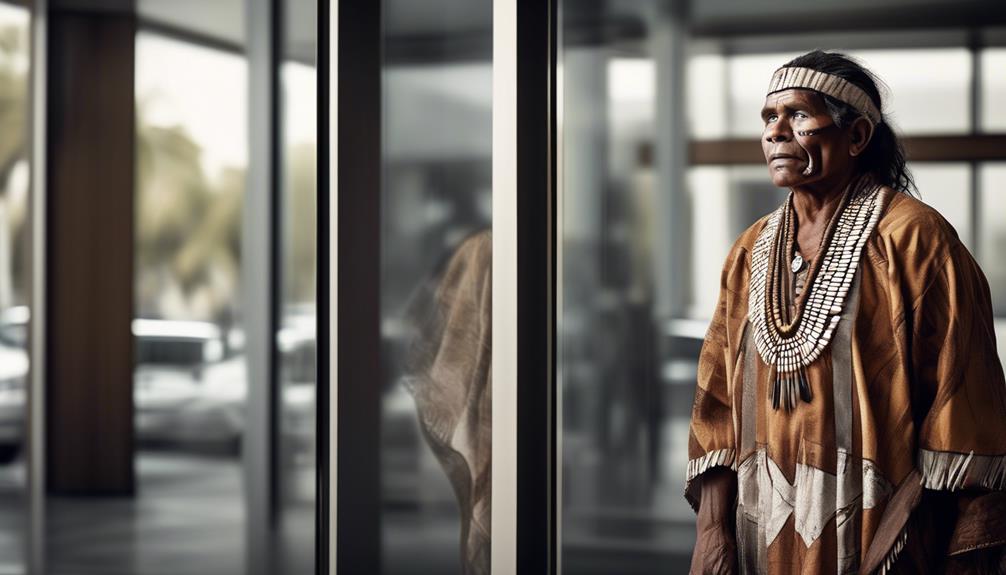
How are employment opportunities for Aboriginal Australians affected by current policies and societal attitudes?
Workplace discrimination and lack of cultural awareness continue to hinder the job opportunities and economic inclusion of Aboriginal Australians in today's society. Despite anti-discrimination laws, many Aboriginal people still face prejudice in the workplace. This discrimination can manifest in various forms, such as being overlooked for job promotions or experiencing unequal treatment compared to non-Indigenous colleagues.
Moreover, the lack of cultural awareness in many workplaces contributes to the marginalization of Aboriginal employees. Employers and coworkers may not understand or appreciate the cultural differences and unique challenges faced by Aboriginal Australians, leading to a sense of exclusion and alienation within the workplace.
On a systemic level, limited access to quality education and training programs also restricts employment opportunities for Aboriginal Australians. This lack of access perpetuates a cycle of economic disadvantage, making it difficult for many Aboriginal individuals to secure stable and well-paying jobs.
However, there are initiatives and programs aimed at addressing these challenges. Cultural awareness training in workplaces and efforts to increase Aboriginal representation in various industries are steps in the right direction. Additionally, targeted education and employment programs designed specifically for Aboriginal Australians can help bridge the gap and create more equitable opportunities in the workforce.
It's essential to continue advocating for policies and societal attitudes that promote inclusivity and equal access to employment for Aboriginal Australians.
Legal and Justice System

We will examine the issue of sentencing disparities and the overrepresentation of Aboriginal people in the prison system.
These are complex and sensitive topics that require an objective and balanced investigation.
Our focus will be on understanding the factors contributing to these disparities and exploring potential avenues for addressing them.
Sentencing Disparities
Sentencing disparities in the Australian legal and justice system persist, raising concerns about fairness and equality for Aboriginal individuals. This issue is complex and multifaceted, but it demands urgent attention and action.
Here are some key considerations:
- Sentencing Disparities: The disproportionate incarceration rates and longer sentences for Aboriginal individuals compared to non-Aboriginal Australians are alarming.
- Reform Initiatives: Efforts to address these disparities are underway, including the implementation of culturally sensitive sentencing options and the promotion of community-led justice programs.
- Community Support: Engaging Aboriginal communities in the justice process and providing support services for rehabilitation and reintegration is crucial in addressing the root causes of sentencing disparities.
It is evident that while progress is being made, there's still much work to be done to achieve a fair and equitable justice system for all Australians.
Overrepresentation in Prisons
Addressing the overrepresentation of Aboriginal individuals in Australian prisons is a pressing concern that stems from the persistent sentencing disparities within the legal and justice system. The issue of racial disparities in the criminal justice system is deeply ingrained and necessitates urgent prison reform. Systemic bias has led to a disproportionate number of Indigenous Australians being incarcerated, highlighting the need for comprehensive changes to ensure fair and equitable treatment within the legal system. This overrepresentation in prisons reflects broader societal inequalities and calls for a thorough examination of policies and practices. To shed light on the extent of this issue, the table below presents statistics on the representation of Aboriginal individuals in Australian prisons compared to the general population.
| Population Group | % of Total Population | % of Prison Population |
|---|---|---|
| Aboriginal Australians | 3.3% | 28% |
| Non-Aboriginal Australians | 96.7% | 72% |
These statistics underscore the urgent need for meaningful prison reform and the eradication of racial disparities within the criminal justice system.
Cultural Preservation

The preservation of Aboriginal cultural practices and traditions remains a critical aspect of addressing historical injustices and fostering a more inclusive society in Australia today. Cultural revival, traditional practices, language preservation, and addressing cultural appropriation are essential components of efforts to preserve and revitalize Aboriginal cultures.
- Cultural Revival: Many Aboriginal communities are actively engaged in reviving traditional cultural practices such as art, dance, storytelling, and ceremonies. These efforts are crucial in reclaiming and celebrating their rich heritage, which had been suppressed for many years.
- Traditional Practices: The continuation of traditional practices, such as hunting and gathering, land management, and bush medicine, not only sustains cultural connections but also contributes to ecological sustainability. Encouraging the transmission of these practices from elders to younger generations is vital for preserving Aboriginal heritage.
- Language Preservation: The preservation of Indigenous languages is fundamental to maintaining cultural identity and passing on knowledge. Efforts to document, teach, and revitalize Aboriginal languages are underway, but more support and resources are needed to ensure the survival of these linguistic treasures.
Addressing cultural appropriation is also a significant concern, as it involves the unauthorized use of Indigenous cultural expressions, symbols, and knowledge. Such actions can undermine the integrity of Aboriginal cultures and perpetuate harmful stereotypes. By recognizing and respecting the significance of cultural preservation, Australia can take meaningful steps towards honoring the diverse traditions of its First Nations peoples.
Community Empowerment
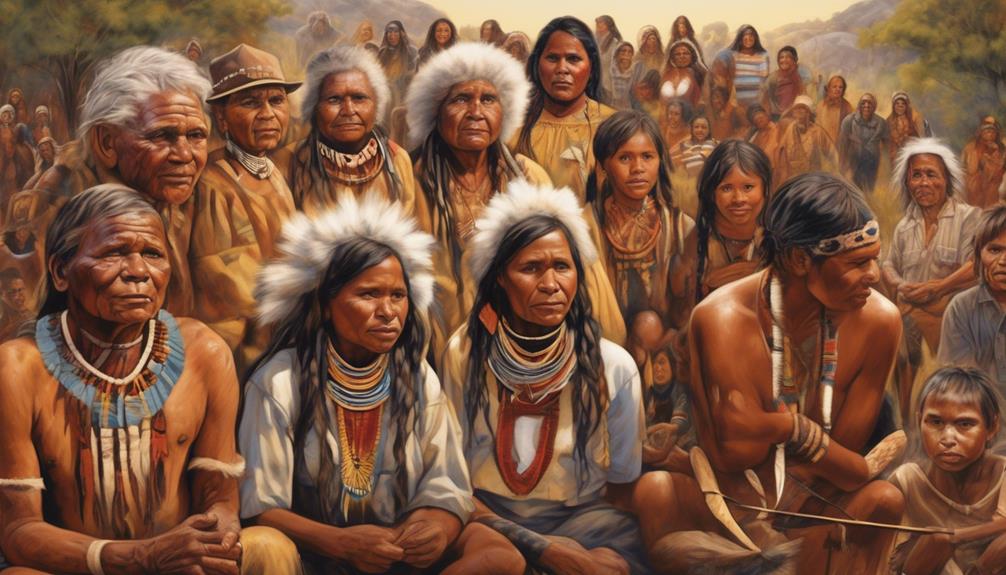
We will now explore the topic of community empowerment among Aboriginals in Australia.
Self-governance initiatives and economic self-sufficiency are two key points within this discussion.
It's essential to understand the impact and effectiveness of these initiatives in order to gain a comprehensive understanding of the Aboriginal community's empowerment.
Self-Governance Initiatives
Aboriginal self-governance initiatives in Australia aim to empower communities and foster autonomy within the framework of broader national governance structures. These initiatives encompass various governance models, including representative bodies and land councils, to ensure Aboriginal voices are heard in decision-making processes.
Economic self-sufficiency is a key focus, with initiatives promoting entrepreneurship, job creation, and sustainable development. Additionally, political representation is being pursued through initiatives that aim to increase Aboriginal participation in local, state, and national government bodies.
These self-governance efforts seek to address historical injustices and empower Aboriginal communities to shape their own futures while contributing to the overall governance of Australia.
Economic Self-Sufficiency
Empowering Aboriginal communities to achieve economic self-sufficiency is a natural progression from the pursuit of self-governance initiatives in Australia, fostering autonomy and addressing historical injustices. It's crucial to address the disparities in employment opportunities and economic development to ensure financial independence and spark entrepreneurial initiatives within Aboriginal communities.
| Challenges | Solutions | Benefits |
|---|---|---|
| Limited access to employment opportunities | Skill development programs and vocational training | Increased job prospects and economic stability |
| Lack of economic development in remote areas | Investment in infrastructure and business support | Enhanced local economies and reduced dependence |
| Financial dependence on government assistance | Encouraging entrepreneurship and small business growth | Strengthened self-reliance and community prosperity |
Political Representation
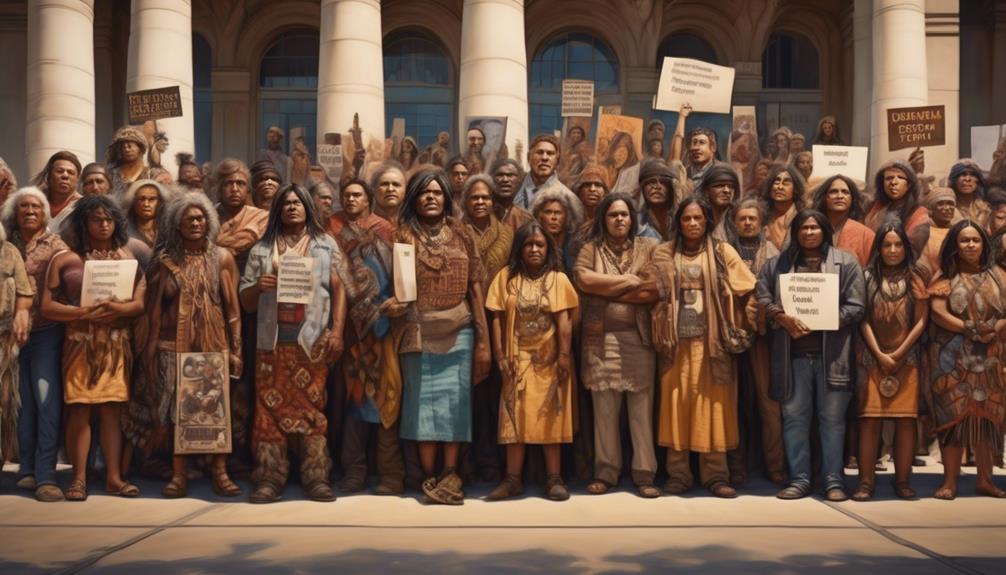
The current state of political representation for Aboriginal people in Australia warrants critical examination and consideration. When evaluating the political landscape, several key points should be taken into account:
- Electoral Participation: Aboriginal people continue to face barriers to full electoral participation. Factors such as limited access to polling stations, language barriers, and a lack of culturally sensitive voter education materials contribute to lower voter turnout among Aboriginal communities. Additionally, the underrepresentation of Aboriginal candidates on the ballots further hinders the political voice of Indigenous peoples.
- Lack of Representation: Despite being the First Nations people of Australia, Aboriginal communities are significantly underrepresented in the political arena. This lack of representation extends to both local and national levels of government, impacting the ability of Aboriginal people to advocate for policies that directly affect their communities.
- Policy Influence: The limited political representation of Aboriginal people has implications for policy decisions that directly impact Indigenous communities. Without adequate representation, policies are often developed without the direct input and perspectives of Aboriginal voices, leading to a disconnect between legislation and the actual needs of Indigenous populations.
As we delve into the state of political representation for Aboriginal people in Australia, it becomes evident that there are substantial challenges that hinder their full and equitable participation in the political process. These barriers not only limit the representation of Indigenous voices but also have broader implications for the development of policies that directly affect Aboriginal communities.
Media Portrayal
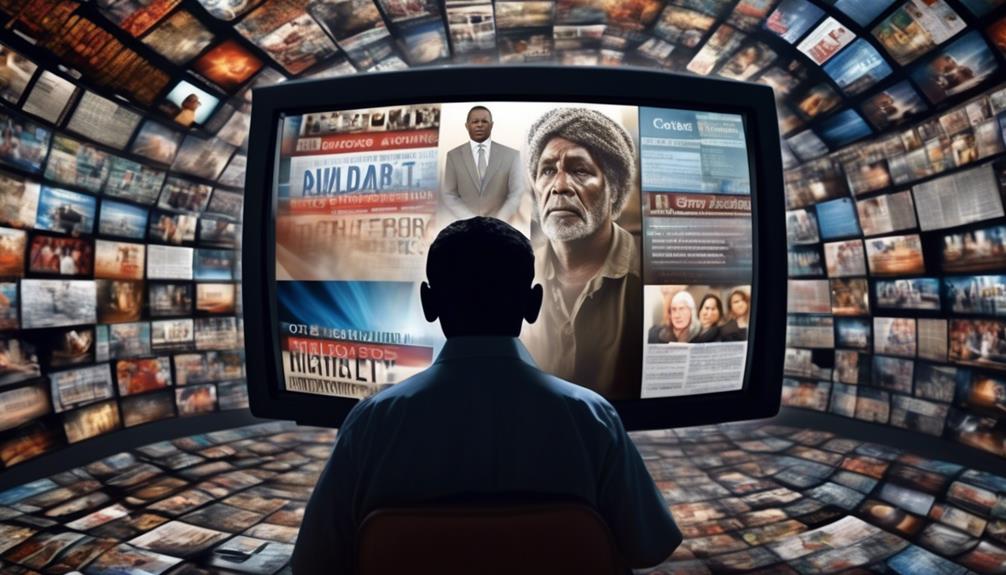
Examining the portrayal of Indigenous communities in the media reveals complex and multifaceted dynamics that warrant careful analysis. The media often perpetuates stereotypical images and misleading narratives about Aboriginal people, contributing to the misinformation and misrepresentation of their culture and experiences. This has significant implications for the way Indigenous communities are perceived and treated in society.
Stereotypical images depicted in the media often reinforce harmful and inaccurate perceptions of Aboriginal people. These depictions can include portraying Indigenous individuals as primitive, violent, or dependent on government support. Such portrayals not only perpetuate negative stereotypes but also fail to capture the diversity and richness of Indigenous cultures and identities. This limited and skewed representation contributes to the perpetuation of discrimination and prejudice against Aboriginal communities.
Furthermore, misleading narratives in the media contribute to the dissemination of misinformation about Aboriginal issues. Sensationalized stories and selective reporting can distort the realities faced by Indigenous people, leading to a lack of understanding among the wider population. This misinformation can also influence public policy and attitudes, further marginalizing Aboriginal voices and experiences.
It is essential for the media to actively work towards providing accurate and diverse representation of Indigenous communities. This can be achieved through promoting Indigenous voices, accurately depicting their experiences, and dismantling stereotypes. By doing so, the media can contribute to a more informed and empathetic society that respects and values the rich cultural heritage of Aboriginal people.
Social Stigma
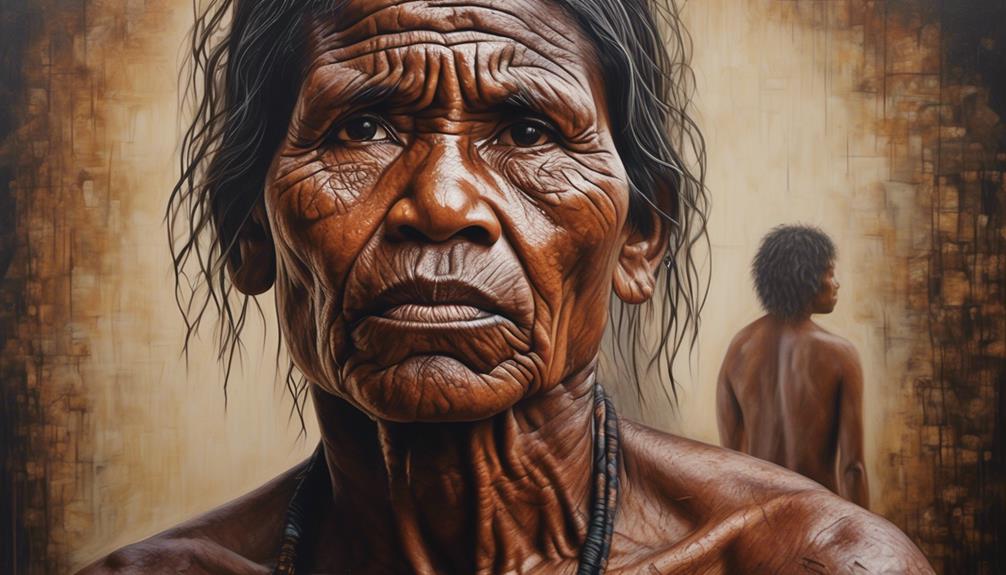
Portrayals of Indigenous communities in the media not only perpetuate stereotypes but also contribute to the social stigma faced by Aboriginal people in Australia today. This stigma manifests in various ways, impacting mental health, employment equity, and overall social inclusion.
- Mental Health: The social stigma attached to being Aboriginal often leads to negative impacts on mental health. The constant exposure to derogatory stereotypes and discrimination can result in feelings of shame, low self-esteem, and a lack of belonging. This, in turn, contributes to higher rates of mental health issues within Indigenous communities.
- Employment Equity: Aboriginal people continue to face significant barriers in accessing equitable employment opportunities. The social stigma attached to their identity often leads to discriminatory hiring practices and workplace biases. This perpetuates economic disparities and limits the ability of Aboriginal individuals to secure stable and fulfilling employment.
- Social Inclusion: The pervasive social stigma creates barriers to social inclusion for Aboriginal people. This exclusion further perpetuates the cycle of disadvantage, limiting access to education, healthcare, and community resources.
The impact of social stigma on the Aboriginal communities in Australia is far-reaching, affecting their overall well-being and perpetuating systemic inequalities. Addressing these issues requires a concerted effort to challenge stereotypes, promote cultural understanding, and create equitable opportunities for all individuals, irrespective of their background.
Reconciliation Efforts

Exploring the current state of reconciliation efforts reveals a complex landscape of initiatives and challenges in addressing historical injustices and fostering meaningful relationships between Aboriginal and non-Indigenous Australians.
Reconciliation progress in Australia has seen various initiatives aimed at promoting cultural exchange and understanding between Indigenous and non-Indigenous communities. Programs such as cultural awareness training, language revitalization efforts, and the celebration of Aboriginal traditions have contributed to fostering greater appreciation and respect for Indigenous cultures.
Additionally, community collaboration has been a cornerstone of reconciliation efforts, with organizations and individuals working together to address issues such as systemic discrimination, socioeconomic disparities, and access to healthcare and education.
Truth-telling efforts have also played a crucial role in reconciliation, with a growing recognition of the importance of acknowledging and addressing the historical injustices inflicted upon Aboriginal peoples. Initiatives such as truth and reconciliation commissions, public apologies for past wrongs, and the recognition of Indigenous sovereignty have been significant steps towards healing historical wounds and building a more equitable future.
However, challenges persist, including the need for deeper structural changes, the empowerment of Indigenous voices in decision-making processes, and ongoing efforts to address the legacy of colonization.
As we continue to navigate the complexities of reconciliation, it's essential to recognize both the progress made and the work that lies ahead. Meaningful reconciliation requires sustained commitment, empathy, and a willingness to confront uncomfortable truths. By engaging in open dialogue, advocating for justice, and actively supporting Indigenous-led initiatives, we can contribute to a more inclusive and equitable society for all Australians.
Economic Inequality
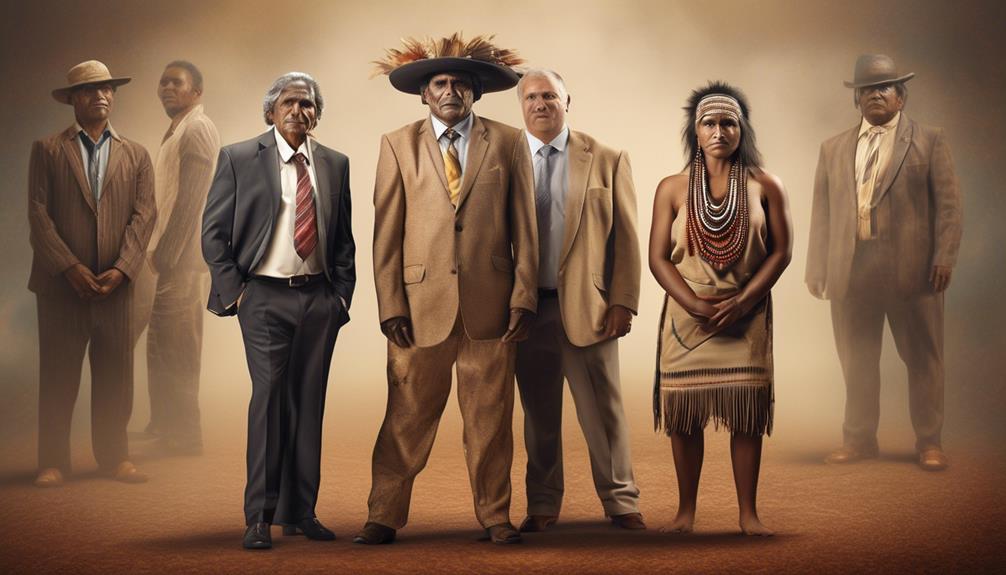
Economic disparities persist between Aboriginal and non-Indigenous Australians, impacting access to resources and opportunities. This economic inequality is evident in several key aspects:
- Wealth Distribution: The distribution of wealth between Aboriginal and non-Indigenous Australians remains significantly unequal. Aboriginal communities often experience lower income levels, limited access to affordable housing, and reduced opportunities for wealth accumulation. The intergenerational impact of historical injustices further exacerbates this wealth gap, making it challenging for many Aboriginal individuals and families to achieve financial security.
- Employment Opportunities: Aboriginal Australians continue to face barriers in accessing stable and well-compensated employment. Factors such as discrimination, lack of educational resources, and geographic isolation contribute to disproportionately high unemployment rates within Aboriginal communities. Additionally, the types of jobs available to Aboriginal individuals often offer limited prospects for career advancement and financial stability.
- Access to Financial Services: Many Aboriginal individuals and communities encounter difficulties in accessing mainstream financial services, such as affordable banking, loans, and insurance. This limits their ability to invest in education, entrepreneurship, and homeownership, perpetuating the cycle of economic disadvantage.
Addressing economic inequality requires comprehensive strategies that prioritize equitable access to employment, education, and financial resources. By acknowledging and actively working to rectify these disparities, Australia can create a more inclusive and just economic landscape for all its citizens.
Indigenous Knowledge
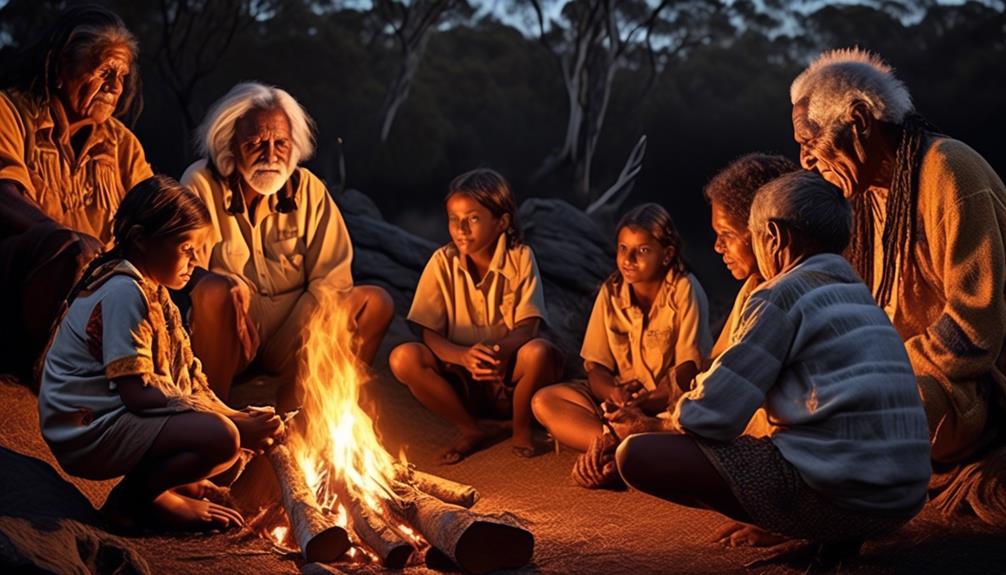
Amidst the persistent economic disparities faced by Aboriginal communities in Australia, it's imperative to acknowledge and value their profound Indigenous knowledge, which encompasses a wealth of wisdom, traditions, and insights that have been passed down through generations.
Traditional practices are an integral part of Aboriginal culture, reflecting a deep understanding of the environment and sustainable living. These practices include land management techniques, such as controlled burning, which not only maintain ecological balance but also reduce the risk of wildfires. The significance of environmental stewardship embedded in Indigenous knowledge offers valuable lessons in conservation and sustainable resource management, which are increasingly relevant in today's global efforts towards environmental sustainability.
Furthermore, the preservation and revival of Indigenous languages are essential for maintaining the richness of Aboriginal cultures. Language isn't only a means of communication but also a repository of cultural knowledge, history, and identity. Efforts to revitalize Indigenous languages play a crucial role in reclaiming cultural heritage and strengthening community connections. Through cultural revival, Aboriginal communities are reclaiming their traditional practices, storytelling, and artistic expressions, contributing to a more inclusive and diverse Australian society.
In acknowledging and respecting Indigenous knowledge, there's an opportunity for mutual learning and collaboration. It's a chance to integrate traditional wisdom with contemporary practices for the betterment of all, while honoring the resilience and enduring legacy of Australia's First Nations peoples.
International Perspectives
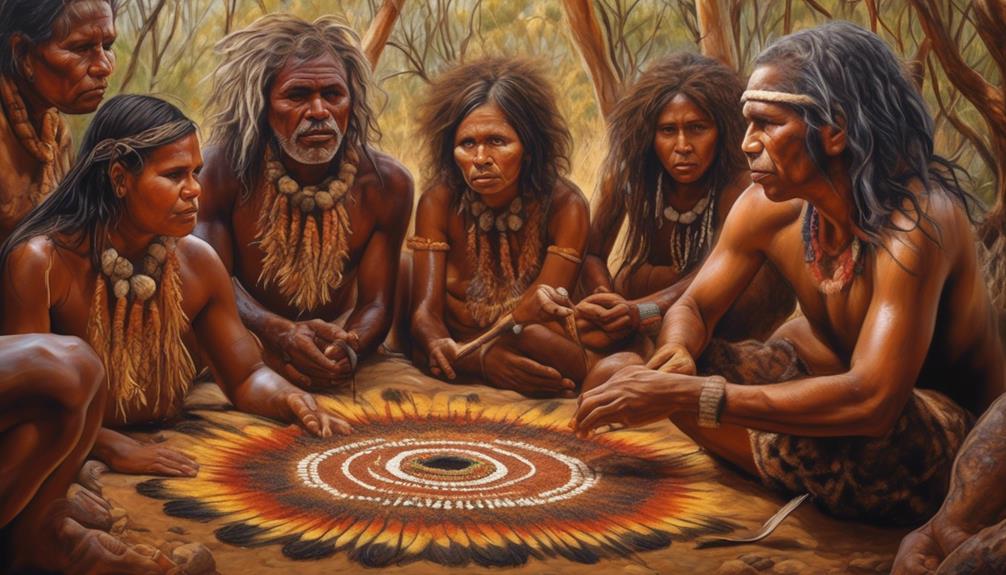
Considering the varying approaches and policies towards indigenous populations worldwide, it's essential to examine the international perspectives on the treatment of Aboriginal communities in Australia today. When looking at the treatment of Aboriginals from a global perspective, several important factors come into play:
- Cultural Exchange: Many countries around the world are increasingly recognizing the value of preserving and celebrating indigenous cultures. Through cultural exchange programs and initiatives, there's a growing awareness of the significance of Aboriginal traditions, languages, and customs. This international recognition contributes to the validation and appreciation of Aboriginal culture, leading to a more respectful approach to their treatment.
- Global Awareness: With the rise of social media and digital connectivity, issues related to the treatment of Aboriginal communities in Australia are receiving global attention. International organizations and advocacy groups are playing a crucial role in raising awareness about the challenges faced by Aboriginal people, thereby exerting pressure on the Australian government to address these issues effectively. This global awareness serves as a catalyst for change, prompting discussions and actions at both national and international levels.
- Collaborative Efforts: International collaborations and partnerships between indigenous communities across different countries have facilitated the sharing of experiences and best practices. These collaborations have resulted in a united front advocating for the rights and fair treatment of Aboriginal communities in Australia. By working together, indigenous populations worldwide are amplifying their voices and strengthening their positions in seeking justice and equality.
Frequently Asked Questions
How Do Aboriginal Communities in Remote Areas Access Essential Resources and Services Such as Healthcare and Education?
Accessing resources in remote Aboriginal communities presents challenges. Healthcare and education are essential services that often lack adequate funding and infrastructure.
Our investigation reveals disparities in access to medical facilities and trained professionals. Similarly, educational opportunities are limited, hindering the community's development.
These findings demand urgent attention to ensure equitable access to essential resources for remote Aboriginal communities.
What Are Some of the Traditional Cultural Practices and Knowledge That Are Being Preserved and Passed Down Within Aboriginal Communities Today?
We've found that traditional practices among Aboriginal communities are being actively preserved and passed down. This includes knowledge sharing, language promotion, and cultural preservation.
Despite economic challenges and remote access, essential services like healthcare and education are being promoted.
Additionally, international engagement is helping to showcase and preserve these valuable traditions.
It's inspiring to see the resilience and determination of Aboriginal communities in upholding their cultural heritage.
How Do International Organizations and Other Countries View and Engage With the Treatment of Aboriginal Peoples in Australia?
International perspectives on Indigenous rights in Australia vary. Some countries and organizations advocate for engagement strategies that prioritize cultural preservation, economic empowerment, and language revitalization.
Others criticize the treatment of Aboriginal peoples.
Efforts to address historical injustices and promote equality are ongoing.
Our understanding of these perspectives informs our approach to advocating for the liberation and rights of Indigenous communities in Australia and globally.
What Are Some of the Economic Challenges Faced by Aboriginal Communities, and What Initiatives Are Being Taken to Address Them?
Economic empowerment is crucial for Aboriginal communities. We're seeing initiatives focused on community development, including programs to enhance financial literacy, entrepreneurship, and access to economic opportunities. By addressing economic challenges, these initiatives aim to create sustainable growth and improve living standards.
This approach is essential for fostering self-reliance and resilience within Aboriginal communities. Ultimately, it promotes economic independence and prosperity.
How Are Aboriginal Languages Being Preserved and Promoted in Modern Australian Society?
Preserving and promoting Aboriginal languages is integral to preserving Indigenous cultures. Indigenous education initiatives and cultural practices play crucial roles in this.
Efforts to preserve and promote these languages are essential in modern Australian society, fostering a deeper understanding and appreciation of Aboriginal heritage. Without these languages, a significant part of Australia's cultural identity would be lost.
It's crucial to support and encourage the preservation and promotion of Aboriginal languages for the benefit of all Australians.
Conclusion
In conclusion, the treatment of Aboriginal people in Australia today is a complex and ongoing issue that requires attention and action. While progress has been made in some areas, there are still significant disparities in land rights, health, education, employment, and economic opportunities.
It's like trying to move a mountain with a teaspoon. We must continue to work towards reconciliation and equality to ensure a better future for all Australians.
